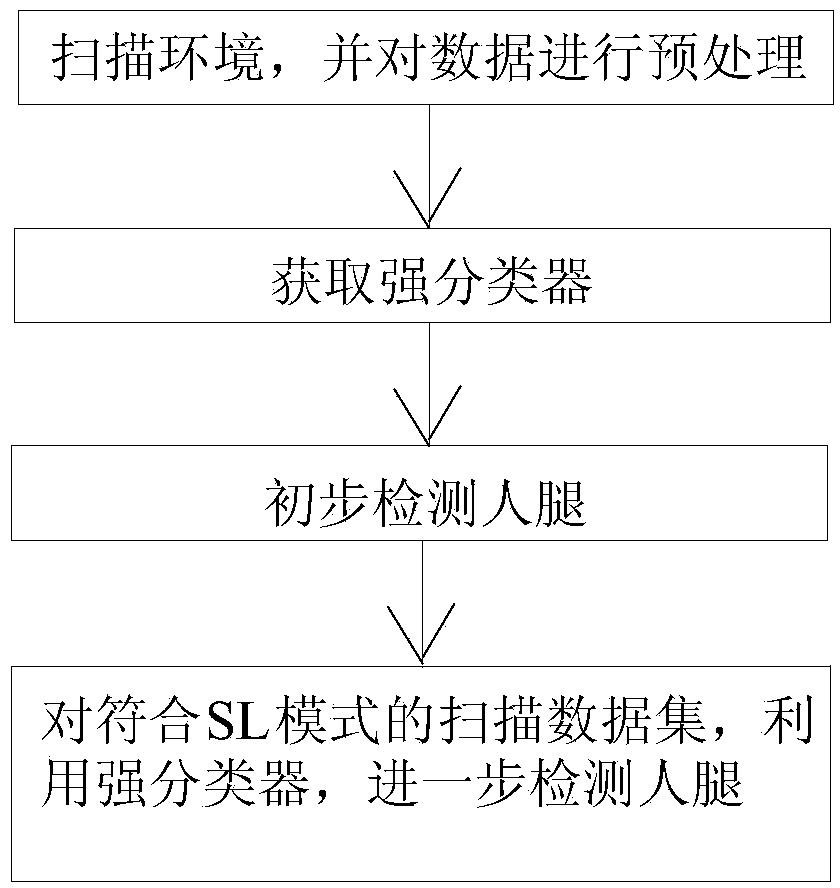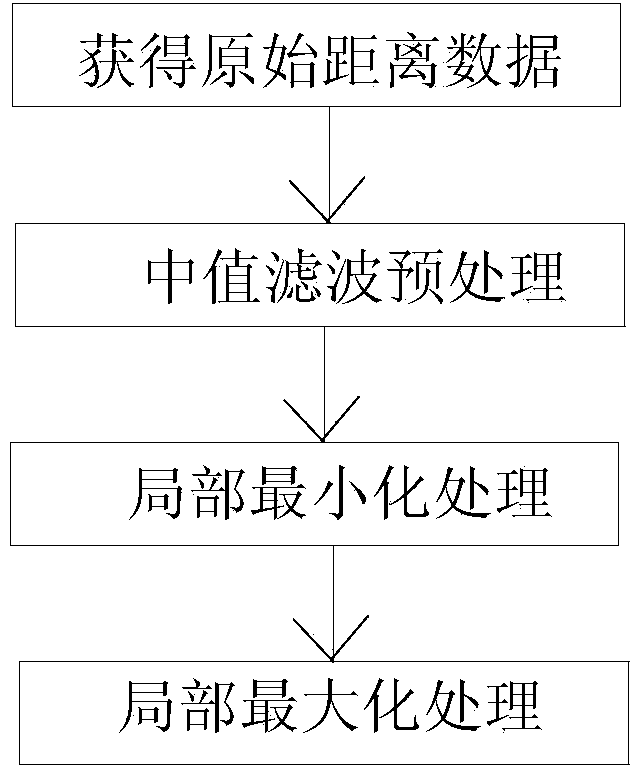Human leg detection method based on two-dimensional scanning lasers
A detection method and two-dimensional scanning technology, applied in image data processing, instrument, character and pattern recognition, etc., can solve the problems of image influence, large number, and difficulty in meeting the real-time performance of the system.
- Summary
- Abstract
- Description
- Claims
- Application Information
AI Technical Summary
Problems solved by technology
Method used
Image
Examples
Embodiment Construction
[0074] Below in conjunction with accompanying drawing, the present invention will be further described.
[0075] Such as figure 1Shown, the people's leg detection method based on two-dimensional scanning laser of the present invention, comprises the following steps:
[0076] The first step: scan the indoor environment with people through the laser sensor, and preprocess the scanned data.
[0077] Considering the influence of environmental noise and dynamic factors, the measured laser data is filtered through the improved median filter method; then the local minimization algorithm is used to eliminate possible peaks due to reflection on the inclined surface; finally, the local maximization algorithm is used to discard objects as thin as table legs. Such as figure 2 As shown, the first step specifically includes the following steps 101) to 104):
[0078] 101): Obtaining original distance data: the original distance data of human leg detection is obtained by laser scanning w...
PUM
 Login to View More
Login to View More Abstract
Description
Claims
Application Information
 Login to View More
Login to View More - R&D
- Intellectual Property
- Life Sciences
- Materials
- Tech Scout
- Unparalleled Data Quality
- Higher Quality Content
- 60% Fewer Hallucinations
Browse by: Latest US Patents, China's latest patents, Technical Efficacy Thesaurus, Application Domain, Technology Topic, Popular Technical Reports.
© 2025 PatSnap. All rights reserved.Legal|Privacy policy|Modern Slavery Act Transparency Statement|Sitemap|About US| Contact US: help@patsnap.com



